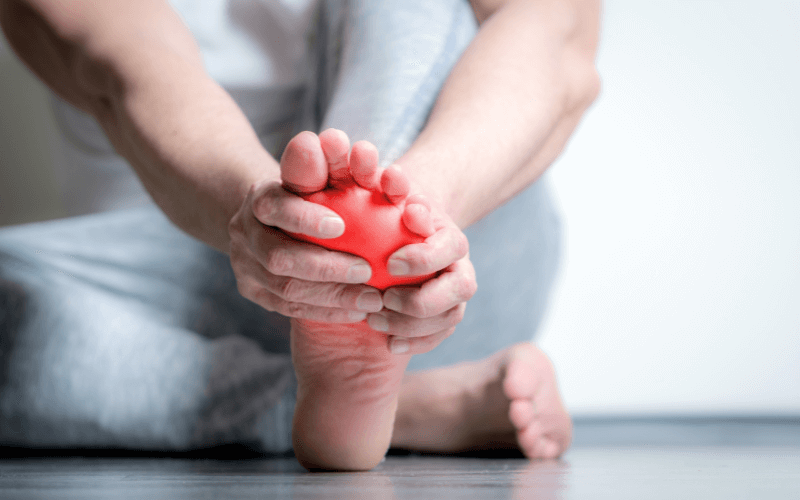The plantar plate is a tough, fibrous ligament that connects the metatarsals (foot bones) to the toes. It provides essential padding underneath the ball of the foot.
This part of your foot is under constant pressure, which makes it vulnerable to injury. In certain circumstances, the soft tissues can tear or rupture altogether – an extremely painful situation.
What Are the Symptoms?
- Persistent Pain
This may be focused on the base of a particular toe but you’ll likely feel it throughout the ball of the foot. Unfortunately, it won’t go away without help from a podiatrist. - Inadequate Cushioning and Pain When Moving
Without padding your feet have no protection from the hard ground. In effect, your bones are grinding directly into an unforgiving surface and that’s going to hurt – a lot. - Swelling
You may notice this across the ball of the foot or on top of the foot just below the toes, or both. - Toe Instability
A damaged plantar plate won’t be able to hold the toes in place properly. This affects your stability and gait, and, over time, this places strain on your entire body.
What Causes Damage to the Plantar Plate?
- Constant Pressure and Repetitive Stress
Sportspeople, gymnasts, dancers or anyone who does a forceful and repetitive activity can be a risk. These activities focus intense pressure on the same spot over and over again. - Injury
If you drop something heavy on your feet or stub your toe with particular force, that can be enough to damage the soft tissues or tear them completely. - Biomechanical Problems and Deformities
Any issues that affect the way you walk (gait) place additional pressure on the soft tissues of the feet and toes. Overpronation (feet and toes roll inwards when walking) or flat arches are common examples.Bone deformities such as hammertoes or bunions also impede the correct foot function. If left untreated, these conditions are sure to place additional pressure on the plantar plate – a situation sure to cause further complications and injury. - Incorrect Footwear
Your feet always need support and cushioning. Without this, your balance is compromised, and ligaments and tendons are damaged all too easily. High heels are especially guilty as they dramatically impair your ability to walk and balance correctly.
How to Ease Plantar Plate Problems
Your podiatrist will know what’s best for you but here are some possible methods.
- Ice and Rest
An ice pack eases pain and reduces swelling. It’s also essential not to make things worse, so rest the foot as much as possible. This helps the soft tissues begin to heal.
- Anti-Inflammatories
Medication can be an effective way to manage pain and reduce inflammation but always check with a healthcare professional before taking anything.
- Exercises for Rehabilitation
Stretching and mobilisation therapy improve flexibility and strengthen soft tissues. This allows your feet to move correctly and helps to improve stability.
- Footwear and Orthotics
If your footwear provides sufficient support, stability and cushioning, you’ll protect yourself from many feet-related problems (or at least minimise their impact). Your podiatrist can advise you on the best shoes for your situation.At Feet By Pody, we can also provide you with custom insoles to improve balance and cushioning. These also help to correct issues with your gait and posture.
Reassuring Guidance at Feet By Pody
Our expert podiatrists are ready to help with all your foot care needs. It isn’t just about bunions and corns (although we’re good at those as well).
Visit us at one of our London foot clinics.

